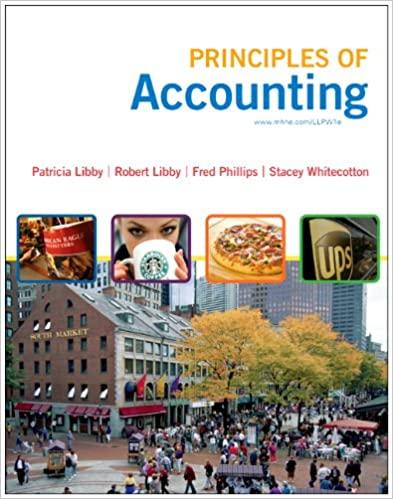Question
Following are the budgeted income statements for the second quarter of 2019 for SeaTech Inc.: April May June Sales $ 252,000 $ 306,000 $ 342,000
Following are the budgeted income statements for the second quarter of 2019 for SeaTech Inc.:
| April | May | June | |||||||||
| Sales | $ | 252,000 | $ | 306,000 | $ | 342,000 | |||||
| Cost of goods sold* | 172,800 | 205,200 | 226,800 | ||||||||
| Gross profit | $ | 79,200 | $ | 100,800 | $ | 115,200 | |||||
| Operating expenses | 39,600 | 45,000 | 48,600 | ||||||||
| Operating income | $ | 39,600 | $ | 55,800 | $ | 66,600 | |||||
* Includes all product costs (i.e., direct materials, direct labor, and manufacturing overhead). Includes all period costs (i.e., selling, general, and administrative expenses). The company expects about 30% of sales to be cash transactions. Of sales on account, 60% are expected to be collected in the first month after the sale is made, and 40% are expected to be collected in the second month after sale. Depreciation, insurance, and property taxes represent $21,600 of the estimated monthly cost of goods sold and $14,400 of the estimated monthly operating expenses. The annual insurance premium is paid in January, and the annual property taxes are paid in August. Of the remainder of the cost of goods sold and operating expenses, 80% are expected to be paid in the month in which they are incurred, and the balance is expected to be paid in the following month. Current assets as of April 1, 2019, consist of cash of $25,200 and accounts receivable of $269,640 ($188,748 from March credit sales and $80,892 from February credit sales). Current liabilities as of April 1 consist of $32,400 of accounts payable for product costs incurred in March; $8,280 of accrued liabilities for operating expenses incurred in March; and a $72,000, 12%, 120-day note payable that is due on April 17, 2019. An estimated income tax payment of $72,000 will be made in May. The regular quarterly dividend of $28,800 is expected to be declared in May and paid in June. Capital expenditures amounting to $30,960 will be made in April. Required: a. Complete the monthly cash budgets for the second quarter of 2019 using the following format. Note that the ending cash balance for June is provided as a check figure. (Use 360 days year for calculations.)
| |||||||||||||||||||||||||||||||||||||||||||||||||||||||||||||||||||||||||||||||||||||||||||||||||||||
b. Assume that management of SeaTech Inc. desires to maintain a minimum cash balance of $18,700 at the beginning of each month and has arranged a $100,000 line of credit with a local bank at an interest rate of 9% to ensure the availability of funds. Borrowing transactions are to occur only at the end of months in which the budgeted cash balance would otherwise fall short of the $18,700 minimum balance. Repayments of principal and interest are to occur at the end of the earliest month in which sufficient funds are expected to be available for repayment. (Do not round intermediate calculations. Use 360 days year for calculations.)
| |||||||||||||||||||||||||||||||||||||||||||||||||||||||||||||||||||||||||||||||||||||||||||||||||||||||||||||||||||||
Step by Step Solution
There are 3 Steps involved in it
Step: 1

Get Instant Access to Expert-Tailored Solutions
See step-by-step solutions with expert insights and AI powered tools for academic success
Step: 2

Step: 3

Ace Your Homework with AI
Get the answers you need in no time with our AI-driven, step-by-step assistance
Get Started


